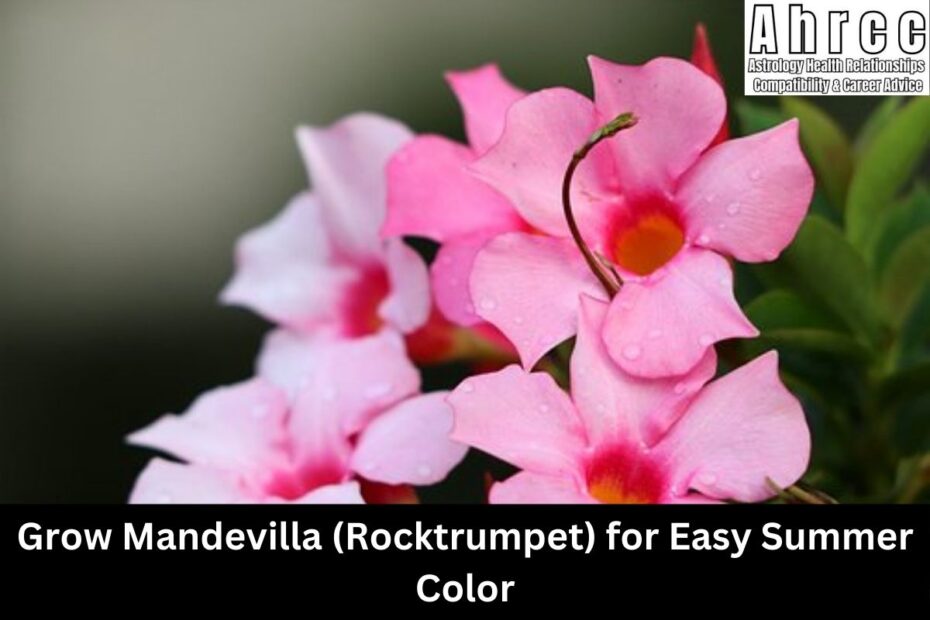Grow Mandevilla (Rocktrumpet) for Easy Summer Color:-Mandevilla, which is often referred to as Rocktrumpet, is an excellent option for bringing brilliant summer color to your patio or yard. Growing and maintaining it is not too difficult, despite the fact that it has a lush, tropical appearance and wonderful blossoms. In order to assist you in effectively cultivating Mandevilla, here are some tips:
Grow Mandevilla (Rocktrumpet) for Easy Summer Color
Choosing the Right Location
Mandevilla is a plant that thrives in full sun, which means that it requires that it receive at least six to eight hours of direct sunshine each day. Additionally, it is able to deal with partial shade, however flowering may be diminished.
It thrives in warm weather, particularly between 65 and 85 degrees Fahrenheit (18 and 29 degrees Celsius). Considering that it is not frost-resistant, you should either shield it from cold weather or bring it inside when the temperature drops.
Planting Tips
Mandevilla should be planted after the date that your region has had its last frost. Seedlings should be transplanted outside after the weather is consistently warm if they were started indoors originally.
Maintain a distance of around 12 to 24 inches between each plant, depending on the variety. There is sufficient space for the vine to grow and ascend as a result of this.
Soil and Fertilization
Soil: Make sure to choose soil that has a pH range of 6.0 to 7.0 and has good drainage. Although it thrives in rich, loamy soil, mandevilla is able to adapt to a wide variety of soil types as long as there is sufficient drainage.
Mandevilla should be fertilized with a well-balanced, water-soluble fertilizer every four to six weeks during the growing season, which starts in the spring and continues through the summer. More blooms can be supported by a fertilizer that contains a higher phosphorus content.
Also see :-Cleome (Spider Flower) Care and Growing Tips
Watering
Maintain a regular level of moisture in the soil, but avoid making it very wet. When you feel that the top inch of soil is dry, water it. Because it might cause root rot, you should avoid letting the plant sit in water that is standing still.
In order to reduce the likelihood of fungal illnesses, it is recommended to water the plant at its base. This will ensure that the foliage remains dry.
Support and Training
Because mandevilla is a climbing plant, it is best to provide it with support in the form of a trellis, arbor, or other support structures. By carefully tying the vines with soft garden ties or twine, you can train them to grow up such that they can sustain themselves.
Mandevilla should be pruned in order to prevent it from becoming too large and to promote a bushier growth habit. To encourage fresh development and continual blooming, remove any flowers that have lost their petals and any stems that are lanky or overgrown.
Pest and Disease Management
Mandevilla has the potential to attract a variety of pests, including aphids, spider mites, and whiteflies. It is important to perform routine inspections of your plant and to treat any infestations with insecticidal soap or neem oil.
It is important to avoid watering plants from above in order to prevent diseases caused by fungi, such as powdery mildew. Ensure that there is adequate air circulation around the plant, and remove any foliage that is impacted.
Winter Care
Indoor Care: When temperatures drop below 50 degrees Fahrenheit (10 degrees Celsius), Mandevilla should be taken indoors in regions with colder climates. During the winter months, lower the amount of water that you give it and place it in a bright and sunny position.
